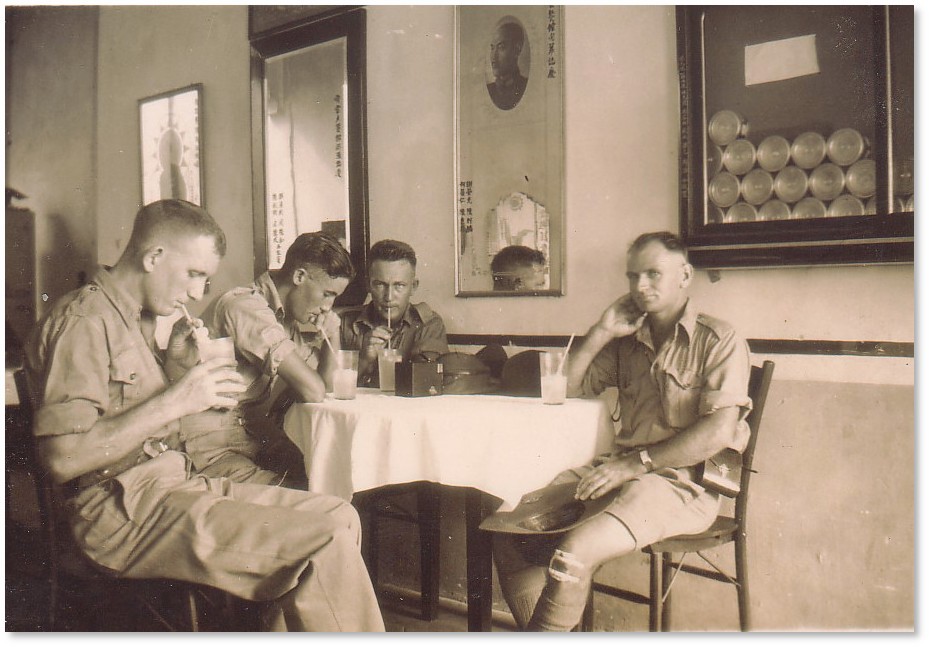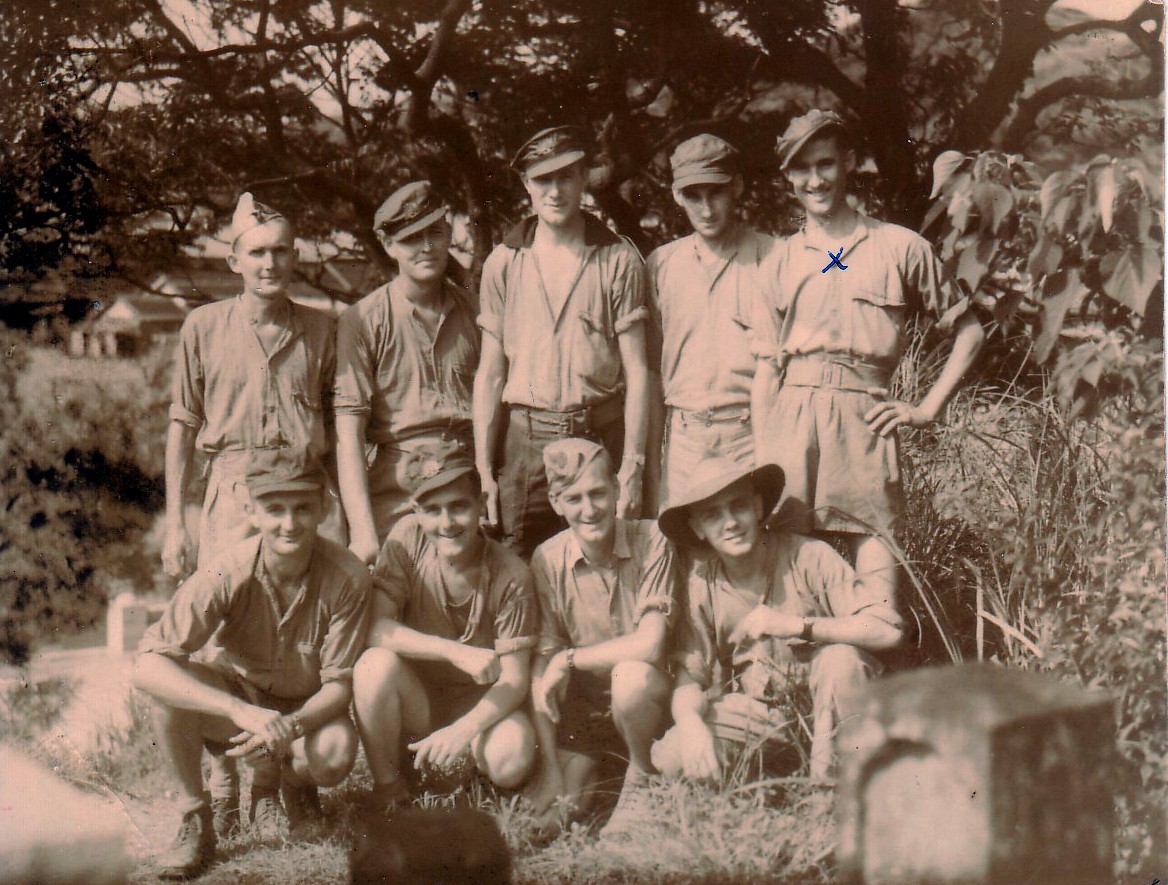Alexander George Gray, 2/10th Field Regiment
By Marg Powell, Specialist Library Technician, Metadata Services | 24 December 2023
The memoirs of gunner Alexander Gray, QX17698, 2/10th Field Regiment. Prisoner of war: Changi, Singapore, Burma-Thailand Railway, Fukuoka ship-yards and coal mine, Japan.
The family of Alex Gray deposited an illustrated copy of his memoir with the State Library in 2012. His candid and humble account begins with his enlistment in Brisbane in August 1940, it continues with his experiences as a prisoner of the Imperial Japanese Army, his recovery from Japan and his return home, on his 27th birthday, 17 October 1945.
Alex was just 22 when he was accepted into the Australian Army and posted to the 2/10th Field Regiment. One of his camp mates - Gordon Campbell QX17671 - introduced him to his second cousin Maud Webster - who would later become his wife. Gordon, also of the 2/10th and taken prisoner of war, endured a different fate to Alex.

Queensland members of the 2/10th Field Regiment, waiting to be ferried to their transport ship, HT QX1 Queen Mary. Image courtesy Australian War Memorial, Accession: 005453, unknown official photographer, 5 February 1941
The 2/10th left Redbank Camp in February 1941 bound for Sydney where they boarded the recently converted luxury liner 'Queen Mary' which sailed in convoy for Singapore and into war. As the ship left Sydney Harbour, Alex wrote a note to Maud and placed it along with a coin, into a tin match-box which he threw overboard. A former WW1 serviceman fishing at Balmain retrieved the box and sent it on to Maud a few months later.
Malacca, Mersing …

Members of the 2/10th Field Regiment, Chinese café, Malacca, 1941. Alex Grey 2nd on left. Image supplied by Gray family.
When they arrived in Singapore the troops were trucked to Malacca where they camped in the grounds of the high school. There they were kept busy with training, drills, and sports often played against other allied forces stationed in the region. As Japanese forces made their way down the Malay Peninsula, the regiment moved to Mersing and Alex was there when three hours after the bombing of Pearl Harbour, he witnessed 17 Japanese bombers flying overhead in the early hours of 8 December 1941 on their way to attack the city of Singapore.
Changi, Singapore …
The regiment's last position was Thompson Road before the allies surrendered, and they were marched into Changi Barracks. Alex relates the story of the work gangs that they were detailed to undertake, often gruesome tasks, including mass burials, but also loading goods at wharves and warehouses, providing opportunities for 'procurement' of supplies, their efforts sometimes earning them cruel punishments.

At left: Studio portrait, Alexander Gray, taken prior to embarkation, 1941. Image supplied by Gray family.
At right: POW index card, National Archives of Australia, Series A14171 Item ID 32137594
Thailand …
Bam Pong, Tarso, Konyu (Hell Fire Pass), Chung Kai, Tamuan
In March 1943 Alex left Singapore with a party of 500 Australians designated 'D Force' later known as Dunlop Force under the medical care of Lieutenant Colonel Doctor Edward 'Weary' Dunlop. Packed into cattle trucks for 5 days, they travelled to Bam Pong [Ban Pong] and Kamburi and were put to work building a railway from Thailand to Thanbyzayat in Burma.
Alex describes in great detail their tortuous labour, 12 hour shifts, punishments and deaths. Constructing embankments, clearing jungle, and the infamous Hell Fire Pass (Konyu Cutting) where they formed teams known as 'hammer and tap'. Many many men died.
Japan …
Fukuoka No 2 POW Camp, Nagasaki …
Alex's narrative is gripping reading - their work, punishment, conditions, disease, death and survival. When the railway was completed many of the surviving prisoners were moved to Tamuan, but it was only a matter of weeks before 'fit' men were selected to go to Japan. They departed 1 July 1944 on the Rashin (Byoki) Maru, the voyage took 70 days. 1,200 POW's in four holds, bound for Nagasaki and a small island off Fukuoka known as Koyagi Shima and Fukuoka No 2 POW camp. They were put to work in the Imari Kawanami Shipyard, surviving on minimal rations and sabotaging work where they could.
Fukuoka No 21 Branch Camp, Nakama …
Their last move was to Nakama, known as Fukuoka No 21 Branch Camp, and the Nakatsuru Coal Mine, south of Nagasaki. The mine which had been abandoned and flooded was worked by POWs with picks and crowbars, night and day.

Group taken near Nakama, September 1945, while they waited to be retrieved from the POW camp. Alex Gray standing, far right.
Image supplied by the Gray family.
Autographed on the reverse: C.R. Godden (NSW), A.J. Freeman (NSW), F.J. Goller (QLD), H. Heywood, (H.G.W. QLD), A.G. Gray (QLD), K.G. Hocking (QLD), C.F. Hancock (QLD) J.E. Garlick (VIC) and [indecipherable]
For Alex and his fellow prisoners, their last shift was 14 August 1945 and when the order was given to yasume (rest) they knew they were the few lucky ones going home, hopefully to their girlfriends and wives.
View the collection …
- 28589 Memoirs of Alexander George Gray, State Library of Queensland
Read more ...
- Prisoners of the Japanese, Burma-Thailand Railway, Australian War Memorial
- The bombing of Singapore, 2nd Shot Blog Spot
- Gordon Patrick Campbell, QX17671 (1920-1997)
Discover more …
- Collections relating to the 2/10th Field Regiment
- Collections relating to the Burma-Thailand Railway
- Collections relating to Queenslanders who were prisoners of war
For the Gray family, December 2023
Comments
Your email address will not be published.
We welcome relevant, respectful comments.